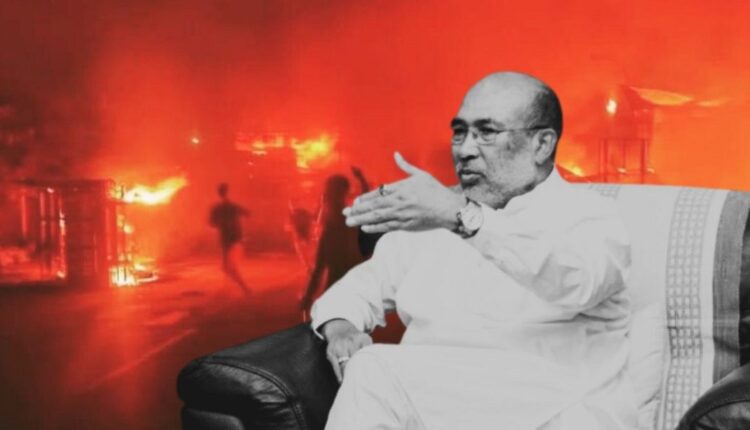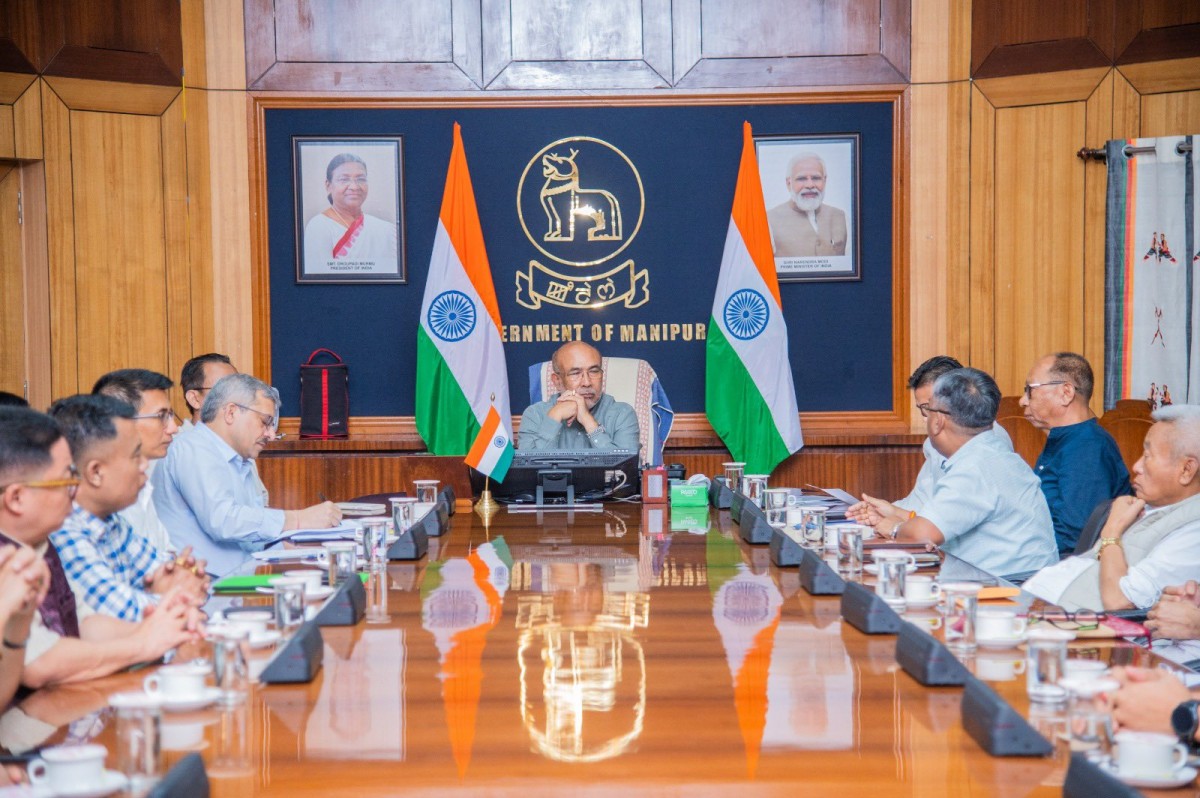
143 Days for Manipur Mayhem: The Centre Must At Least Give Biren Singh Marching Orders Now
This story first appeared in The Wire
What rankles the most for all those who have watched Manipur’s descent to chaos is the fact that the man holding the reins of governance and failing miserably to do so is still presiding over the chaos and loss of over 170 human lives and the displacement of, at least, about 70,000 people from their hearths and homes.
When large sections of the Indian populace have all but forgotten Manipur, there are a few brave hearts who believe that discussing Manipur is important so as to allow a sliver of light to filter into what is currently a clouded cloak that shuts out reason and hope. Hence a webinar on the above topic was held recently.
But the thorny question that remains unanswered is – How do we create platforms for societal conversations when the divide between the Kuki-Zo group and the Meitei is unbridgeable? Even those who are supposed to police wrongdoing are caught in a bind as they are overtly partisan towards one community. The Manipur Police has lost its credibility, as it is seen to be a Meitei Police and not the Manipur Police. The Assam Rifles by virtue of having been in Manipur for too long a time has developed familiarity with the Kuki-Zo people and perhaps empathy for them too in the midst of what is a humanitarian crisis of unspeakable proportions.
If a state within a federal republic is unable to put a halt to the killing and mayhem for 143 days (as of writing this article), the correct thing to do is to remove him and bring in central rule. This would at least be seen by the Kuki-Zo people as an attempt to heal their wounds. But it appears that the Union home ministry has been indulging in some sort of talks with different groups in Delhi. These talks obviously are not reaching anywhere because what leaders from both communities speak inside closed doors cannot be shared. Once outside, the negotiators have to adopt the correct posturing to convey to their people that they have not given in, nor given away an inch.
Points of conflict
In this bleak scenario, perhaps, the only institution that can bring in a semblance of order is the Supreme Court. There needs to be a Supreme Court-monitored committee with a timeline to study:
(a) The inherent and legacy problems around land, and a clear declaration from the Geological Survey of India as to the mineral resources detected in the Hills of Manipur. This transparency is critical in order to put the lid on all kinds of wild assumptions that fuel fear in one of the groups and opportunism in the other.
(b) The narcotics trade, normally controlled by militant outfits, is a smoke-and-mirrors issue. At the moment, there are only allegations and counter-allegations as to who is actually knee-deep in this multi-crore trade. Why can’t we have clarity on this? Who are the beneficiaries of the drug trade? Here too, we need a completely independent inquiry. Let’s not forget that in February this year, 50 kilograms of opium valued at Rs 10 crore was seized from the secret cavities of a vehicle. The supplier, Loyangamba Itocha, a Meitei, and Ranbir Singh, the buyer, were both arrested near the Badarpur border. This calls out the lie that only the Kuki-Zo are involved in the narcotics trade.
As far as the state is concerned, since the issue of land is at the heart of the conflict, there is an urgent need for a cadastral survey to get a grip on who actually holds how much land in Manipur. In a country governed by a robust constitution, and with protective clauses like Article 371 C, to protect tribal interests, can we have parallel ancestral land-holding systems without any land reforms?
For instance, the Kukis follow two distinct land ownership practices: the traditional and the modern chieftainship. In the traditional system, the chief who usually is the head of the clan (eldest male in the family lineage) owns the whole land in his name. Apart from his own kinsmen, he may allow kinsmen who are not of his lineage or even other clans to settle in his jurisdiction but legal ownership is in his name. He may transfer the land to his younger brothers to establish a new village, but that village will bear the initials of the parent village name.
In the modern chieftain system, the chief allows all the villagers to have legal land ownership documents by giving a no-objection certificate so that the patch of land is registered separately in the name of the occupant/owner within the village jurisdiction. One reason why the affluent Kukis want to settle in Imphal is due to the autocratic traditional system of land ownership where the villagers live at the mercy of the chief at all times. Interestingly, the Nagas and Mizos have abolished the traditional chieftainship system and the land is owned by the community and state respectively. This, therefore, is an issue that the Kuki-Zo people have to resolve.
Local power dynamics
Inequity is the breeding ground for conflicts. How are the power dynamics in Manipur? Who calls the shots? Who is controlling the narrative and the police and administration today? It is naturally the Meiteis since they now have complete control over Imphal Valley. It has been purged of all Kuki-Zo tribals. Recently, a soldier from the Kom (Naga) community living in Imphal was mercilessly killed.

When the rule of law is non-existent and the chief minister of the state does not feel safe to travel to the hills how can anyone speak of bringing peace? Chief minister Biren Singh has lost the confidence of the Kuki-Zo groups. His continuance in office is a sore point for them. Every action of the state government today is viewed with suspicion, especially after senior Indian Police Service (IPS) officers of the Kuki-Zo community have been arbitrarily removed from their former positions and given insignificant postings.
There is a sizeable presence of Kuki officers in the Manipur administration. Today, they are unable to join their services for fear of being lynched if they come to Imphal Valley.
The Supreme Court had directed the Central Bureau of Investigation (CBI) to go into the various human rights violations and sexual abuses, but even here a fair and impartial investigation is impossible due to interference by different Valley-based groups. Recently, five youths dressed in camouflage and moving around with arms impersonating the special forces were arrested, and the Meira Paibis (women vigilante) called a 48-hour bandh and resorted to other shenanigans to demand their release. Where is the state in such a situation?
There is palpable inequity even in the rehabilitation of displaced persons. Meiteis displaced from Chandel and other districts were provided housing in chief minister Biren Singh’s constituency in Imphal. No such efforts were made to rehabilitate the Kuki-Zo groups which are displaced by the thousands.
From all accounts, it appears that the two communities have reached a point of no return. The Nagas, meanwhile, seem to have joined forces with the Meiteis in opposing any settlement for the Kuki-Zos. It’s a case of my enemy’s enemy is my friend. But this bonhomie might last until the Naga Framework Agreement takes effect and new boundary lines are drawn. This will lead to another outburst of dissension. Manipur is, therefore, a cauldron that will continue to brew poison. It would take a high degree of statesmanship to deal with the situation. Politicians are the cause of all dissensions. Looking to them to resolve conflicts – which they are largely responsible for igniting– is a fool’s errand.
And what’s the point in having over 40,000 boots on the ground that are essentially sent to Manipur with their hands tied? It’s a no-win situation anyway as we look at it.
